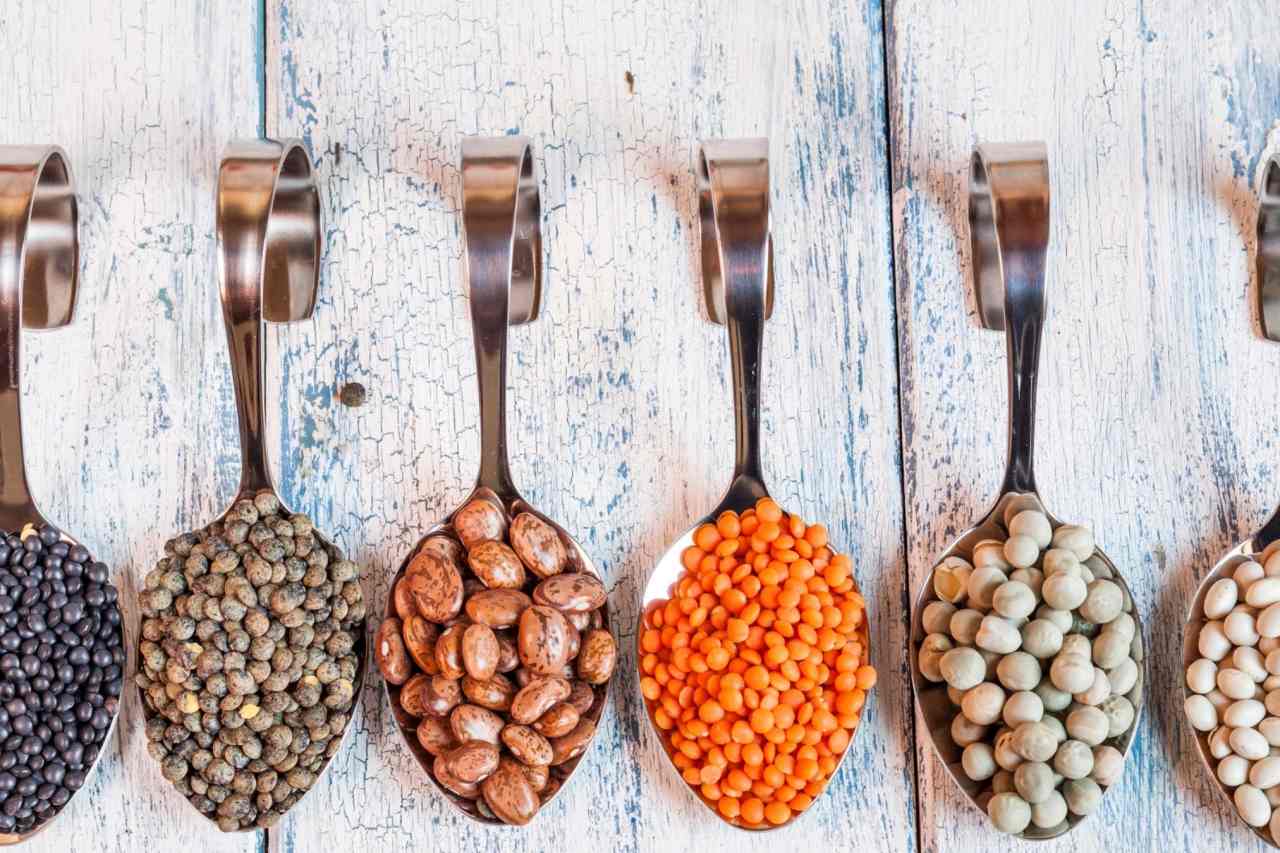Everyone knows that consuming sufficient protein is a non-negotiable in the event you’re making an attempt to assist your muscle development. In any case, protein is the constructing block of muscle tissue, making it a key macro for individuals who need to bulk up or see extra tone.
However if you wish to assist your muscle tissue whereas supporting the atmosphere, then you definitely’ll must look extra rigorously for the sustainable protein sources which can be good for the planet.
From selecting choices that use much less water to supply, to leaning on decisions that don’t end in extreme quantities of greenhouse emissions, there are a lot of methods to assist Mom Earth’s well being when you’re additionally serving to your individual well-being.
Establish Sustainable Protein Decisions
Realizing the way to establish sustainable protein decisions is step one to sustaining your muscle tissue in an environmentally pleasant method. Many plant-based diets assist athletic efficiency whereas contributing to environmental well being. In comparison with omnivore diets, vegan diets scale back land-use impacts by 50 to 86 p.c, water use by 22 to 70 p.c and greenhouse fuel emissions by 21 to 70 p.c. Due to this, limiting animal protein seems to be a optimistic step in sustaining environmental well being.
However if you’re a meat lover, know that you simply don’t need to go utterly plant-based to assist the atmosphere. Sure animal proteins are extra sustainable than others, and figuring out the way to learn labels when buying may help you sustainably navigate your decisions.
Some widespread phrases that may assist clue you in on how the animals are handled embody the next:
Natural meat. This implies the animals are raised in situations accommodating their pure behaviors, fed 100% natural meals, and don’t obtain antibiotics or hormones.
Grass-fed. This meat have to be licensed USDA natural, and the animal should be capable of eat grass and meals like hay (as a substitute of feed).
Licensed humane raised and dealt with. This refers to how the animals are raised. The group that manages this certification is concentrated on bettering the lives of livestock in meals manufacturing, partly by driving the demand for kinder and extra accountable farm animal practices.
Pasture-raised. These animals will need to have had entry to the outside for a minimal of 120 days per yr.
Pure. This time period signifies that the meat has been minimally processed in order that it’s not essentially altered from the unique model. Merchandise made with synthetic colours, flavors or chemical preservatives wouldn’t be categorized as pure.
Raised with out antibiotics. Because of this the animal was not given antibiotics at any level in its life through its meals decisions or injections.
Suggestions for Together with Protein Sustainably
Selecting sustainable protein sources can imply various things for various individuals. Whereas some individuals need to emphasize meals that use a minimal quantity of water to supply, others need to be sure that the meals decisions they embody should not contributing to world warming. Relying by yourself private values and targets, selecting protein sources that align with what you imagine is finest for the planet may be easy to do with a little bit of know-how.
Listed below are eight methods that you would be able to be light on the planet whereas additionally serving to gasoline your muscle tissue on the similar time:
1. Embrace environmentally pleasant protein-packed complete grains.
Complete grains are sometimes considered a carbohydrate supply, however together with the energy-supporting carbs, many complete grains are pure protein sources.
As an illustration, sorghum is an historic grain that requires little or no water to supply — below regular situations, sorghum produces about 500 kilos of grain for each inch of whole water.
And sorghum is a dietary powerhouse, serving up a whopping 10 grams of protein in simply 1 cooked cup. Strive swapping sorghum in dishes that historically embody rice. And for a enjoyable crunchy deal with, pop some sorghum simply as you’ll popcorn.
2. Select pole- and line-caught tuna.
One 3-ounce serving of canned tuna incorporates 21 grams of protein together with wholesome fat and necessary micronutrients. However not all tuna is sustainably sourced.
Some strategies for catching tuna use nets to primarily scoop up any tuna of their method — together with the rest of their path, probably together with turtles, small whales, dolphins and different fish that aren’t meant to be caught.
Pole and line fishing makes use of hand-held poles to catch the tuna and is probably the most sustainable possibility. This technique is extra selective, permitting the fishermen to catch one tuna at a time, avoiding hooking different sea life or birds. When purchasing for canned tuna, search for labels that state the fish was caught utilizing pole or line fishing.
3. Lean on nuts and legumes which have a small water footprint.
Whereas all nuts and legumes are nutrient-packed and a supply of plant-based protein, some choices require considerably extra water to supply than others.
For instance, it takes simply 5 gallons of water to supply 1 ounce of peanuts, in comparison with 80 gallons for an oz. of almonds. Plus, peanut crops are additionally nitrogen fixing, which means that they take nitrogen from the air and produce their very own within the floor, which advantages different crops.
One ounce of peanuts incorporates 7 grams of plant-based protein. Whether or not you snack on shelled peanuts noon or add a dollop of its butter to your oatmeal, know that selecting peanut merchandise may be fairly impactful to your well being and the atmosphere.
4. Embrace bivalves in your food regimen.
Bivalves, like oysters and mussels, are pure filter feeders, which means that they feed by straining suspended matter and meals particles from water. “Filter-feeding species can naturally reduce illness threat to people and wildlife, primarily by serving to preserve our water sources clear,” Integrative and Comparative Biology states.
Three ounces of oysters present 8 grams of protein. Consuming these bivalves helps preserve oyster, clam and mussel farms wholesome and thriving, permitting farmers to proceed to develop these sea creatures within the water and assist take away pollution in a pure method.
5. Swap out beef for beans.
Enjoyable truth: Producing 1 kilogram of protein from kidney beans requires about 18 instances much less land, 10 instances much less water, 9 instances much less gasoline, 12 instances much less fertilizer and 10 instances much less pesticide versus producing 1 kilogram of protein from beef. Clearly, leaning on beans to your protein can have a serious influence on the atmosphere — and simply 1 cup of beans offers 15 grams of protein.
6. Add lentils to your dishes.
Pulses, like lentils, assist a sustainable and various agriculture system, use minimal water to develop, have a low carbon footprint when utilized in cropping rotations and assist scale back meals waste. They’re a nutrient-dense supply of protein and contribute to meals safety and human vitamin throughout the globe.
Conversely, the water footprint per gram of protein for milk, eggs and rooster is sort of one and half instances larger than pulses. And on the subject of beef, the water footprint per gram of protein is about six instances bigger than for pulses.
7. Lean on rooster to your animal protein repair.
In case you are a meat eater, lean on rooster as a substitute of much less sustainable protein sources that produce the next carbon footprint.
Whereas choices like lamb have a giant carbon footprint, due to the fuel emissions that they produce, rooster has a decrease influence on the atmosphere. Actually, pound for pound, rooster requires much less feed than what many different consumed animals require, and so they don’t create methane fuel.
Selecting pasture-raised chickens look like much more environmentally pleasant whereas additionally being a extra humane technique for the animals to be raised.
8. Salmon
Whereas previously we have been advised that wild salmon is the one possibility on the subject of sustainable salmon decisions, we will now lean on wild- and farm-raised choices, due to new and improved practices within the farm-raised trade. So long as the salmon farmers are implementing sustainable practices, the farmed salmon trade can restrict habitat harm, illness and air pollution, based on the Monterey Bay Aquarium Seafood Watch.
Salmon packs 30 grams of protein right into a 5-ounce fillet, making it a prime decide for sustainable protein sources. Asking if a retailer or restaurant serves sustainable seafood may help you navigate your decisions. Alternatively, you may obtain the Seafood Watch information that will help you select correctly.







